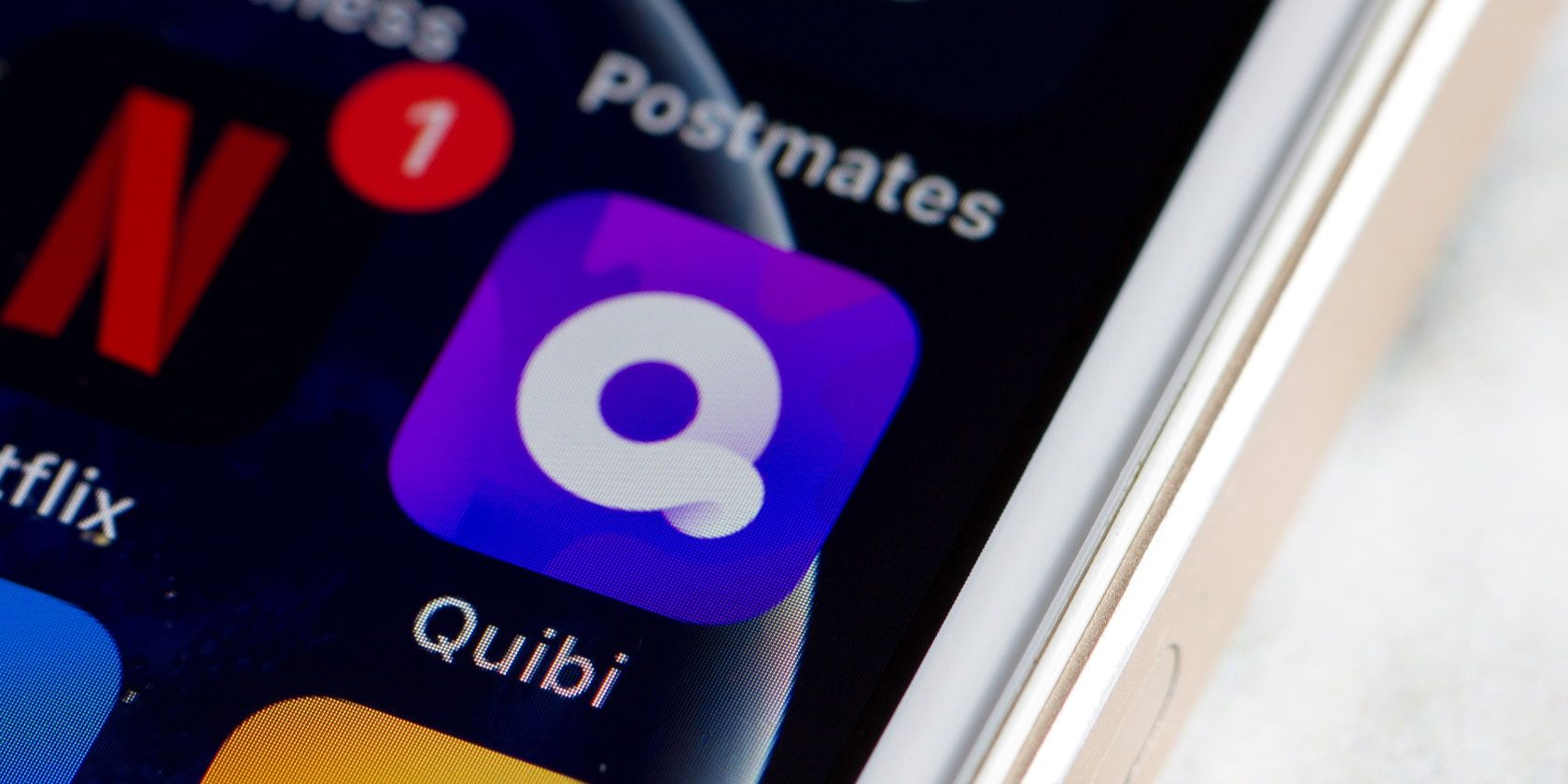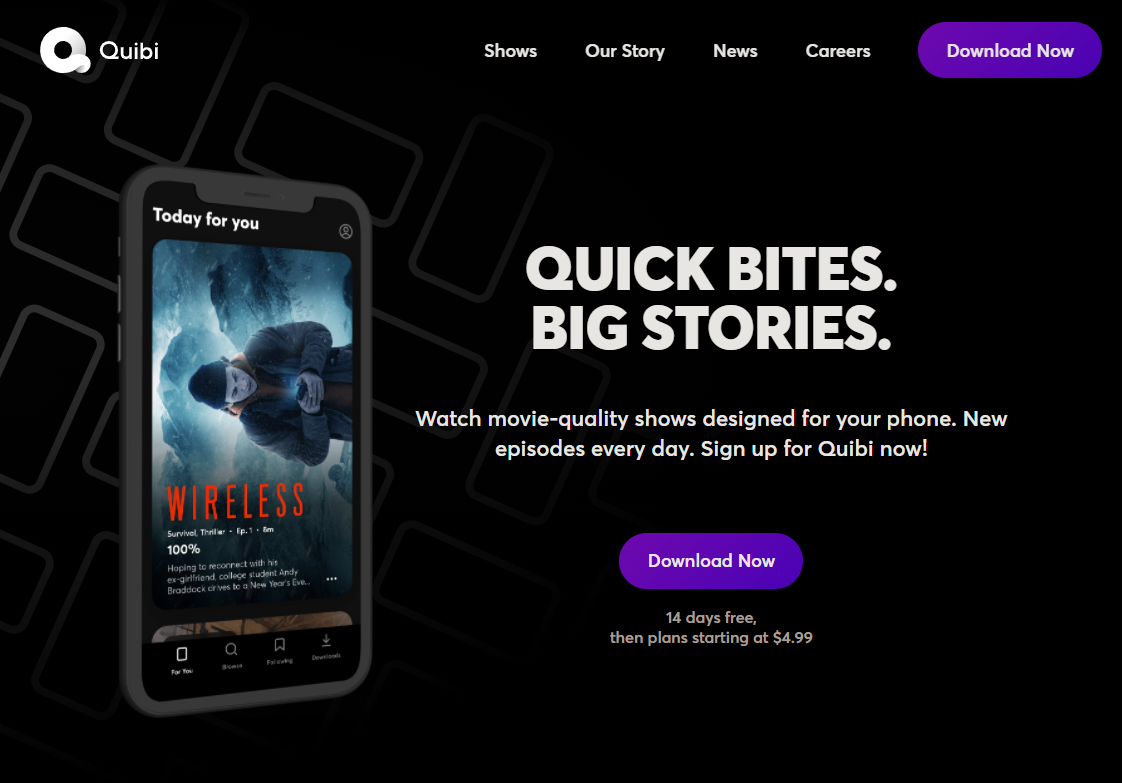Quibi's launch was surrounded by hype, and it was poised to be the hottest new streaming service. But less than a year after launch, the company has announced its end of life.
So what was Quibi, how did it get started, and why did it fail? Let's take a look at Quibi's history to see what went wrong with it.
Quibi's Promising Beginnings
Quibi began life as NewTV in August 2018, designed as a streaming service that targeted younger audiences (millennials and Gen Z) with high-production video content delivered in quick 10-minute-max episodes. In fact, the name Quibi comes from "quick bites".
The company was founded by Jeffrey Katzenberg, who is best known for his time as chairman at Disney Studios and being a co-founder of DreamWorks. Quibi's CEO, Meg Whitman, is also notable for being the president and CEO of HP, as well as serving on the board of many major companies like P&G.
In addition to these big names, Quibi had quite a bit of backing to start off. The company racked up a billion dollars in funding from major companies including Time Warner, MGM, Disney, and NBC.
Over the course of 2019 and early 2020, Quibi prepared for launch. During this time, it secured more investing and attracted advertisers to its platform.
Leading up to release, Qubi released promo materials (including a 2020 Super Bowl ad) advertising the stars that would star in the platform's shows.
Some of the many big names slated to appear in Qubi's programming include Chrissy Teigen, Kevin Hart, Liam Hemsworth, Reese Witherspoon, Kiefer Sutherland, Anna Kendrick, and more.
How Did Quibi Work?
Quibi launched on April 6, 2020 in the US and Canada. In August 2020, the company brought a free ad-supported version of the app to Australia and New Zealand.
These are the only regions where Quibi was officially supported. Quibi's help page on availability vaguely states that the ad-free US version of the app may appear for users in other countries. but it's not clear what this meant in effect.
All of Quibi's programming came in bite-sized pieces. No episode was longer than 10 minutes, and some were as short as three minutes. Its content was all designed to watch on your phone, and would dynamically switch between portrait and landscape orientations when you moved your device.
Its shows were split into three main categories:
- Movies in Chapters: Longer shows released in parts, similar to a standard TV show.
- Unscripted and Docs: Reality shows that are self-contained in each episode.
- Daily Essentials: Quick updates with horoscopes, entertainment, news, etc.
Take a look at Quibi's shows page if you'd like to see more about them.
In the US, Quibi offered two tiers. An ad-supported option costed $5/month, while ad-free access was $8 a month.
Quibi's Downfall
While the company had big plans for Quibi, it didn't take long to realize that it wasn't working out as planned. Just a week after release, Quibi dropped out of the 50 most popular free iPhone apps, and was down to 125th around a month later.
In June 2020, the company's executives took a pay cut due to poor performance of the service. Also during this time, Quibi was projected to hit two million subscribers by the end of its first year, which was far lower than the over seven million the company had originally projected. Only a small percentage of people continued their original 90-day free trial into a paid subscription.
On October 21, 2020, Quibi confirmed that it planned to shut down around December 1. The service had around 500,000 subscribers when it made the announcement.
Nobody knows exactly what will happen to Quibi's existing or upcoming shows. Since they're all original, Quibi doesn't own the rights to them. Perhaps they'll appear on another service, or the owners will scrap them.
Why Did Quibi Have So Much Trouble?
Now that we've examined the rise and fall of Quibi, let's look at some of the reasons why it went up in flames so quickly.
The COVID-19 Pandemic
There's no question that the coronavirus pandemic had a huge effect on Quibi's performance. In mid-March 2020, due to the emerging virus, countries around the world (including the US) started encouraging people to stay home unless absolutely necessary.
However, Quibi was built around consuming content on your phone in short bursts, such as while riding the bus or waiting in a coffee shop. Because most people were at home instead of going about their daily routines, there was less demand for what Quibi offered. If you were at home all day, why not just watch Netflix or something else on your TV?
Speaking of which, that wasn't the only area where other streaming services had Quibi beaten.
A Lack of Value for Money
Quibi wasn't a cheap service for what it offered. At $5/month, you still had to put up with ads, which are frustrating when you're trying to squeeze mobile content into your busy day.
And $8/month for ad-free access is more expensive than Disney+, which has value from exclusive shows that draw viewers in, like The Mandalorian. Quibi didn't have a must-see show that would make people sign up, nor did it have a back catalog of content that people wanted to enjoy.
A free tier could have helped bring more people onto Quibi, allowing them to check it out. As it stood, people could already enjoy unlimited free content on YouTube with a few ads, so why would they pay for Quibi (especially during the pandemic, when money was tight for most)?
Plus, a Quibi subscription only gave you access on one device, further lowering the value compared to competitors.
Insufficient Features
For a mobile-only service, Quibi launched with a couple of major features missing. One of them was the inability to take a screenshot of a show. This functionality was disabled for copyright reasons, but dealt a huge blow to the virality potential of Quibi content.
Without a way to share bits of what you were watching, especially with the wild nature of many unscripted Quibi shows, Quibi was pretty much limited to people who already knew about it. Think about what Baby Yoda memes did for The Mandalorian—Quibi didn't have that chance until the screenshot feature was added in July, well after its launch.
Another major feature omission was the inability to cast Quibi content to your TV. It wasn't until June when Quibi added this option using a Chromecast or AirPlay. And the company didn't release an app for Apple TV, Amazon Fire TV, and Google TV until October.
Again, with people stuck at home because of the pandemic, why would they pay to watch short shows on their phone when there's a wealth of content they already want to watch on Netflix, Hulu, YouTube, and/or Disney+?
Poor Focus
It's a bit difficult to sum up Quibi in a sentence, which was bad for its image. There was no rhyme or reason to its shows, and the ones that were on the service generally lacked a punch.
When you sign up for Disney+, you know you're getting access to everything Disney offers. And it's easy to find content you like in YouTube's astounding catalog. But Quibi seemed to gather an assortment of shows just to amass content with no regard for uniformity or quality.
Even the below ad, released in early January 2020, fails to explain what the service is about in any way.
We didn't mention any specific Quibi show earlier, because there really aren't any that stood out. If there's nothing on the service that people feel like they need to watch, why would they want to sign up?
Learning From Quibi's Failures
Despite the huge celebrity involvement, tons of hype, and bundles of money thrown at the project, Quibi failed quickly and miserably. It's difficult to point to any one factor as the sole reason. If the pandemic hadn't happened and the service had more exciting shows available with a free plan, maybe it would have taken off.
But for now, we don't think anyone will miss Quibi. There are plenty of other superior streaming services you can access on your phone anyway.
Image Credit: Tada Images/Shutterstock


